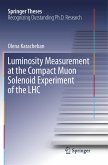This book pioneers a novel approach to investigate the effects of pressure on fission tracks, a geological problem that has remained unsolved for 60 years. While conventional techniques to study fission tracks were limited in precision, this book overcomes such issues by using state-of-the-art synchrotron-based x-ray scattering; a technique initially developed for applications in material science and biomedical research.
The book provides an overview of the theory and application of small angle x-ray scattering (SAXS) on cylindrical ion tracks, including in-situ SAXS on ion tracks with simultaneous increases in temperature and pressure. As such it demonstrates a degree of characterisation normally not achievable with in-situ techniques. Further, it compares SAXS with small angle neutron scattering (SANS).
This book has led to a range of publications and attracted the interest of the geological and material science communities. Daniel Schauries has been awarded severalprizes for this research, including the Graduate Student Award of the Materials Research Society.
The book provides an overview of the theory and application of small angle x-ray scattering (SAXS) on cylindrical ion tracks, including in-situ SAXS on ion tracks with simultaneous increases in temperature and pressure. As such it demonstrates a degree of characterisation normally not achievable with in-situ techniques. Further, it compares SAXS with small angle neutron scattering (SANS).
This book has led to a range of publications and attracted the interest of the geological and material science communities. Daniel Schauries has been awarded severalprizes for this research, including the Graduate Student Award of the Materials Research Society.








